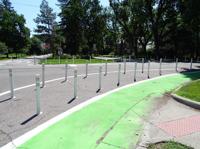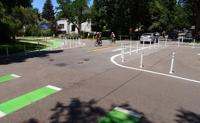‘Not well thought out’: Residents up in arms as Denver installs bike lanes at Little Cheesman Park
Denver officials describe their new bike lanes through core neighborhoods as routes to “a more connected, safe, and accessible” transportation network, but neighbors who have seen how those improvements work up close are begging the city to put the brakes on the program.
“Safety is the reason why we’re doing what we’re doing,” said Nicholas Williams with Denver Department of Transportation and Infrastructure, who represented the city on a Zoom meeting Thursday with neighbors along Seventh Avenue Parkway, moderated by newly-installed District 5 Councilwoman Amanda Sawyer.
At one point, some 187 questions for the transportation department were queued up for Sawyer — many of them about the intersection at Seventh Avenue and Williams Street on the corner of Denver’s Little Cheesman Park.
Two months ago, neighbors there emerged to find a maze of lanes and colored zones painted into their streetscape, flanked by some 80 bollards — waist-high poles poking up from the pavement, some of them taking spaces away from the area’s already crowded parking.
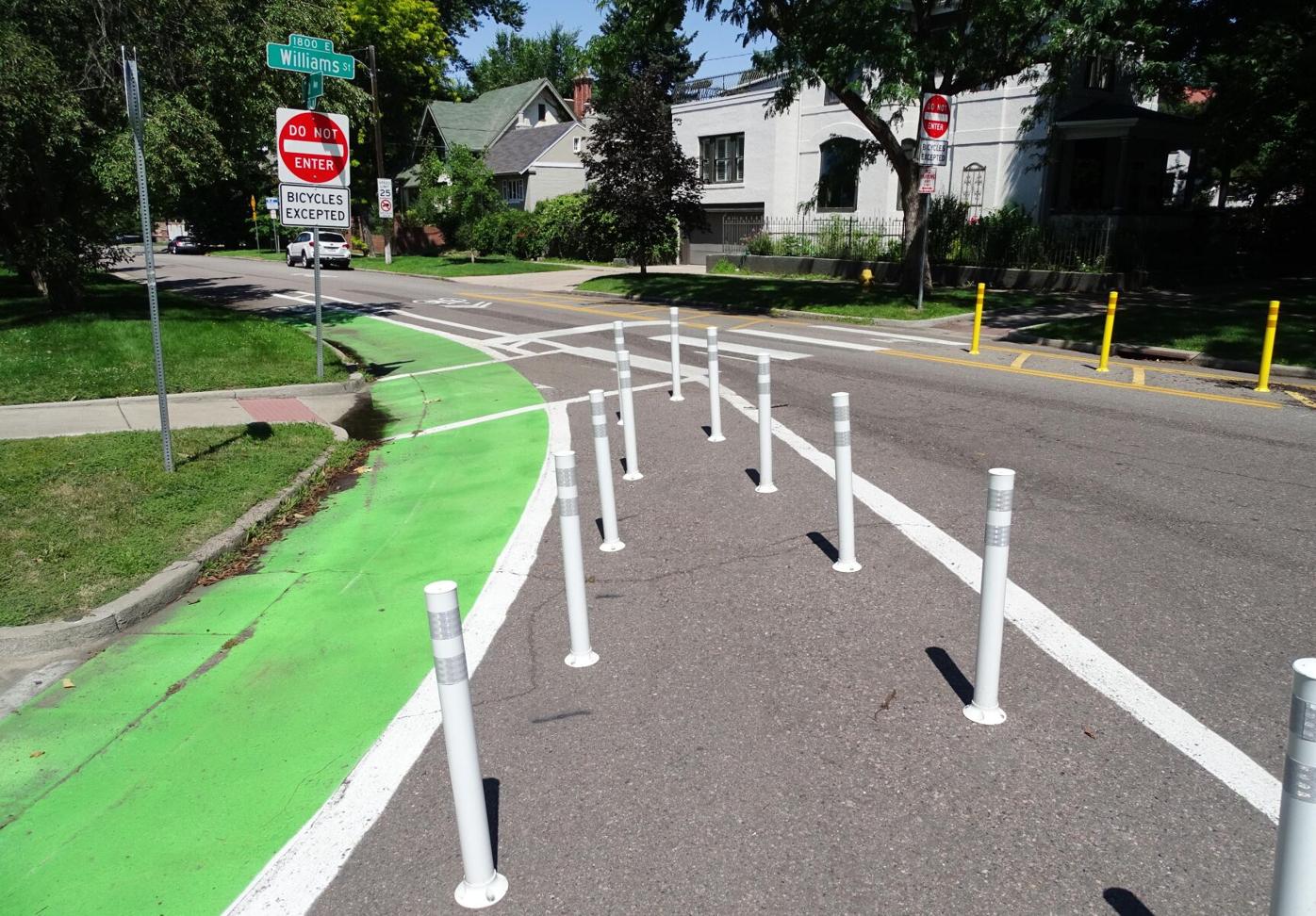
Residents around Little Cheesman Park that the city of Denver has "not been good about sharing information” regarding new bike lanes installed at Little Cheesman Park. (PHOTO: Mark Samuelson)

Residents around Little Cheesman Park that the city of Denver has “not been good about sharing information” regarding new bike lanes installed at Little Cheesman Park. (PHOTO: Mark Samuelson)
In blocks to the west, where Seventh Avenue narrows into a narrower corridor through the Seventh Avenue Historic District, the city’s alteration cuts off two-way traffic with a “Do Not Enter” sign, followed by three intersections further west, where painted roundabouts have been roughed in and where neighbors say the city plans to install physical vertical roundabouts in the narrow intersections.
“The whole configuration out there doesn’t make sense,” Jennifer Mandelson, who lives across a couple of doors from the intersection, told The Denver Gazette following the session. “It’s not well thought out.”
“What you have here is a debacle. It destroys the character of the neighborhood,” Mandelson said.
“The city has not been good about sharing information,” said Amy Shonstrom, who lives on the parkway and was riding her bike through the gauntlet of bollards on the way to her house.
In interviews with The Denver Gazette, Shonstrom and other neighbors maintained they had little or no warning from the city before the installation appeared beside the park in May.
“You’ve got the most unintuitive design,” said Talia Ballinger, who began reaching out to neighbors as the network of traffic channeling devices suddenly appeared near her home. “There’s no way you can prepare people for it.”
She said that she received only a single notification from the city in months leading up to the project.
“I just got a flyer that there would be a bike lane. That’s great,” Ballinger told The Denver Gazette.
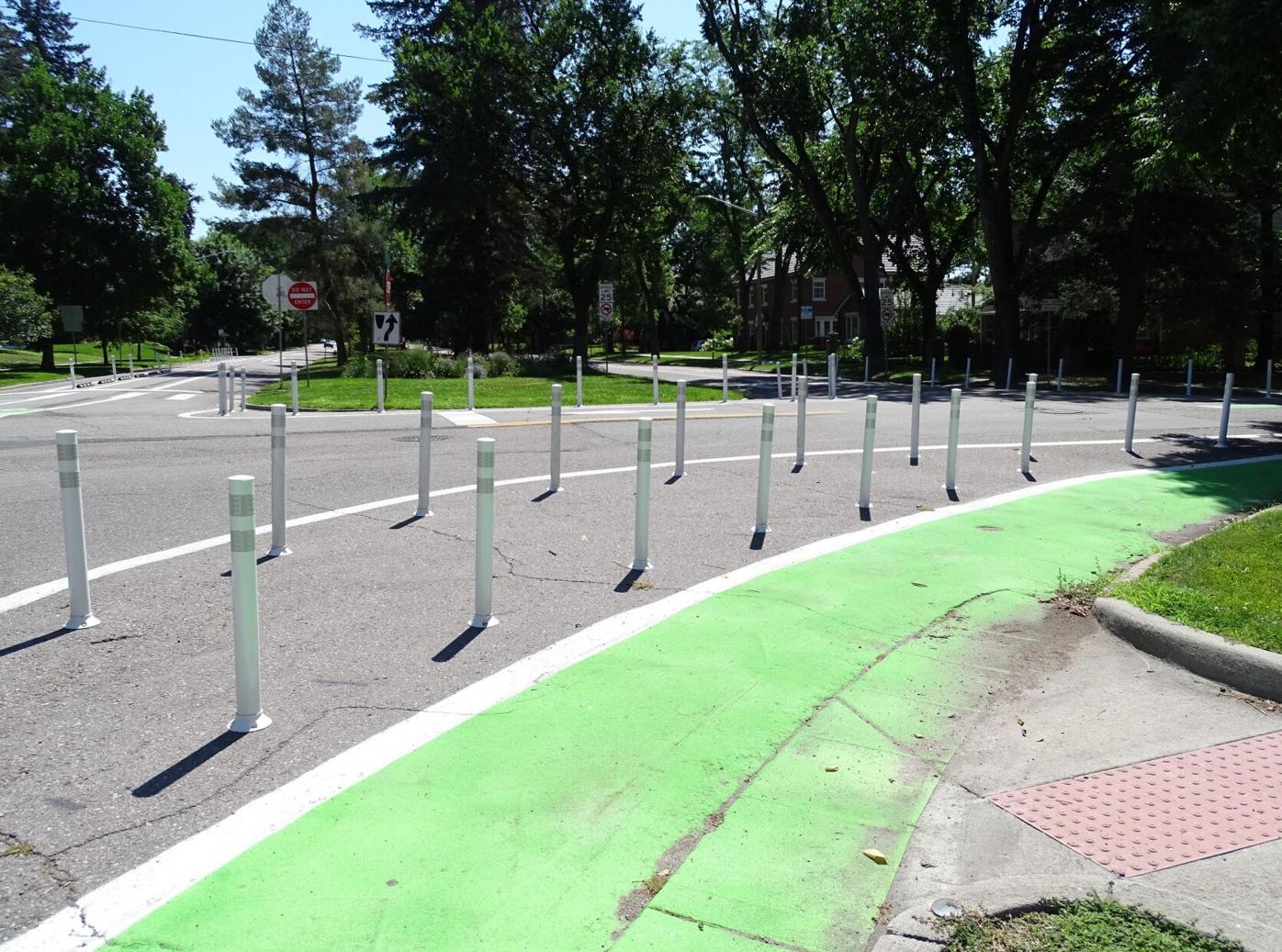
Neighbors at Little Cheesman Park emerged to find a maze of lanes and colored zones painted into their streetscape, flanked by some 80 bollards — waist-high poles poking up from the pavement, some of them taking spaces away from the area’s already crowded parking. (PHOTO: Mark Samuelson)

Neighbors at Little Cheesman Park emerged to find a maze of lanes and colored zones painted into their streetscape, flanked by some 80 bollards — waist-high poles poking up from the pavement, some of them taking spaces away from the area’s already crowded parking. (PHOTO: Mark Samuelson)
Once the barriers appeared at Seventh Avenue and Williams, Ballinger and a few other neighbors called a May 31 meeting in the park to discuss their options. That event, neighbors say, drew a crowd, then turned contentious as representatives of a cycling organization that had been notified arrived to support the new infrastructure.
Residents said their questions about the infrastructure are being trivialized by the bike lane supporters as being solely about aesthetics. However, they maintained that their real concern is whether the various devices are actually safer than what was there before.
During weeks that followed the meeting, one neighbor paid for an engineering firm to study the blocks west of the intersection to determine if they actually carry the amount of traffic the city maintains creates safety issues for cyclists. That study, conducted by IDAX Data Solutions over a period of four days in July along intersections where the city has installed or plans to install calming devices, show volumes well below the 1,500 vehicles per day that residents say is the city’s stated threshold.
The Denver Gazette received no immediate reply after queries to DOTI concerning the data it used to select the site for the improvements.
Rather than make the parkway safer, residents said they see the new infrastructure as creating more hazards both for bikers and for drivers.
“The safety issue is paramount; I don’t know a single person that doesn’t want safety, and it’s lovely to have a protected bikeway,” Ballinger said.
She and other neighbors said that city data show no injuries and no deaths whatsoever from a few accidents that have occurred along the avenue over a span of years, west along Seventh Avenue from the intersection.
“How do you measure improvement when you’re starting with a zero-injury rate?” Ballinger asked.
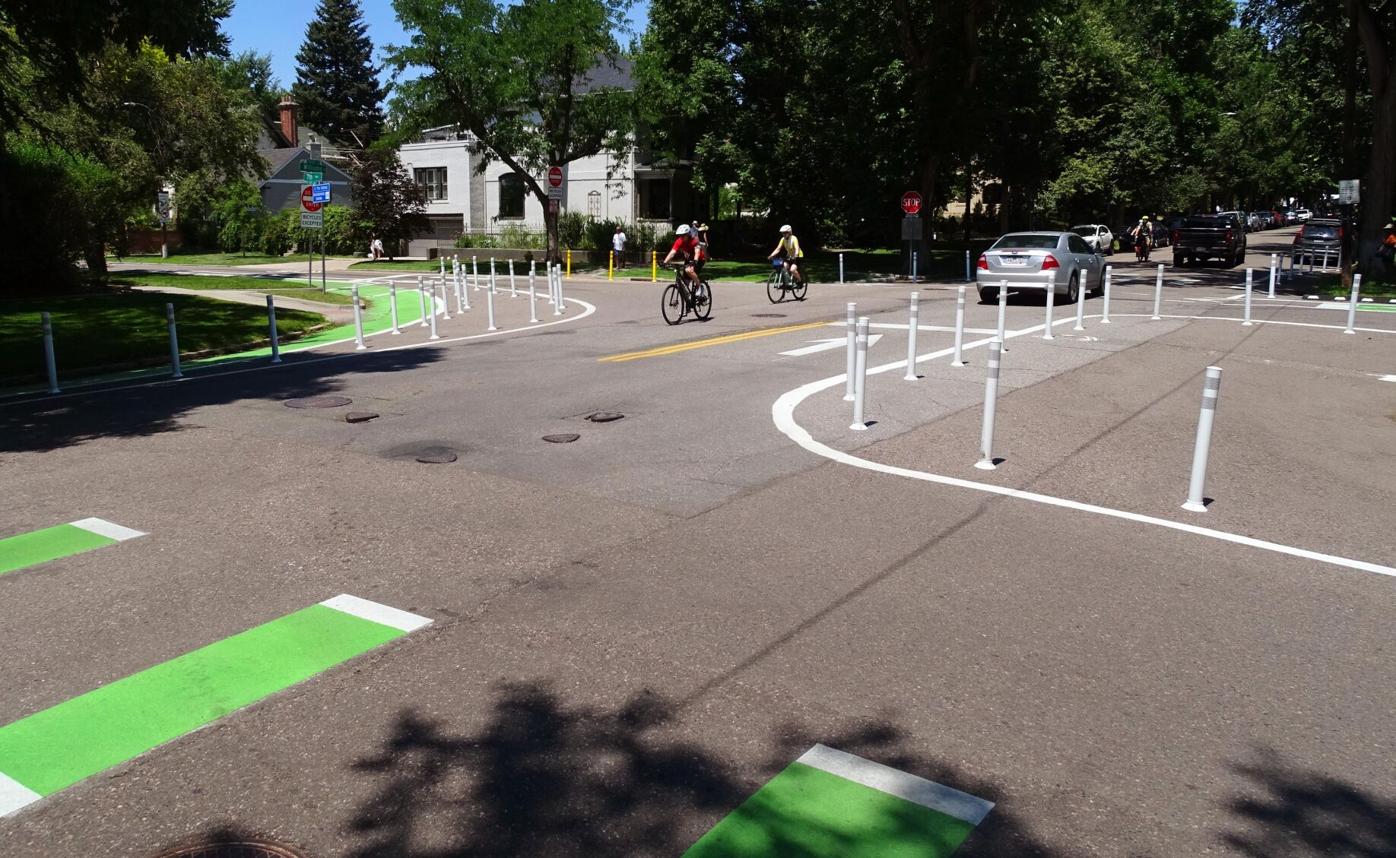
“The whole configuration out there doesn’t make sense,” Jennifer , who lives across a couple of doors from the intersection, told The Denver Gazette in July following the Zoom session with Denver's transportation agency. Mandelson was complaining about the new bike lanes the city installed at Little Cheesman Park. (PHOTO: Mark Samuelson)

“The whole configuration out there doesn’t make sense,” Jennifer , who lives across a couple of doors from the intersection, told The Denver Gazette in July following the Zoom session with Denver’s transportation agency. Mandelson was complaining about the new bike lanes the city installed at Little Cheesman Park. (PHOTO: Mark Samuelson)
Meanwhile, in the Zoom call with the city, one questioner said, “I came close to hitting a biker,” while crossing the intersection.
That was among numbers of reports of close calls that neighbors report, as they navigate the intersection at Seventh and Williams.
Noontime visits to the intersection over the course of two days revealed a number of confused drivers who ignored the new Do Not Enter sign and continued westbound through the intersection, while others seemed confused by narrow turn lanes. Some bikers seemingly avoided the designated channels for bike riding and cut their own routes across the car lanes.
At Downing and Seventh, a mile west of the site, new bollards seemingly forced cyclists into the narrow vehicle traffic lanes, rather than allowing them to negotiate the street closer to the corner.
DOTI’s Williams, in answering repeated questions about the timing and safety of the features, gave a flat “no” to a query as to whether the city would consider removing the features. He also said that the city had made a substantial effort to notify residents in advance of the installation. In response to a questioner, he maintained that the neighborhood association along Seventh Avenue had been brought into the planning process.
Not true, said Jesse Morreale, president of the Seventh Avenue Neighbors Association, in conversation with The Denver Gazette.
“There was no notice to us at SANA,” he said.
Morreale said the association would have no other comment on the issue, pending opportunities for residents to voice their concerns.
Several neighbors noted that they themselves are frequent bikers.
“I’m avid cyclist and I’ve done Race Across America,” Amy Shonstrom said. “We have a bike lane that (already) works just fine.”
“We’ve never had an accident,” she said, adding, but now “we’re going to have an accident.”
Meanwhile, a nearby association in Denver’s Country Club neighborhood that flanks Third Avenue east from Downing Street told The Denver Gazette that the city agreed to reduce its plans for that thoroughfare after neighbors began raising objections.
The city will stick to a painted bike lane layout, rather than physical modifications, said Curt Nelson, former president of Country Club Historic Neighborhood. He added that he could see no existing safety issue along Third Avenue that necessitate improvements.






